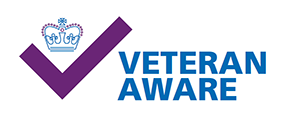Our Services A - Z - Abdominal Wall Reconstruction (AWR)
About the service
Mersey and West Lancashire Teaching Hospitals provides a comprehensive Abdominal Wall Reconstruction (AWR) service that is dedicated to repair complex defects of the abdominal wall. This service is carried out in the Trust as a combined service between General Surgery and Plastic Surgery departments.
Abdominal wall reconstruction is a surgical procedure designed to repair and strengthen the muscles and tissues of the abdominal wall. It is usually considered when there is a complex abdominal wall hernia, significant weakness or damage to the muscles of the abdomen or wide separation of the muscles. We deal with all components of the abdomen, which include the skin with the underlying fat, the muscles and the tough layer around the muscle called the fascia.
The service includes 4 main milestones:
Diagnosis: Upon receiving a referral regarding your condition that may require a review with the abdominal wall service, you will have a consultation with a general surgeon and a plastic surgeon. A Computed Tomography (CT) scan is usually needed (if it has not already been done) to aid diagnosis. You will have a discussion regarding the options of management depending on your own specific circumstances and condition.
Preparation: If you need an abdominal wall reconstruction, your general health and condition will be assessed e.g. your past medical history and lifestyle factors. You might be advised to go through a set of steps in preparation for the surgery and be reviewed by the pre-op assessment team to see how fit you are for surgery.
Surgery: If you are deemed ready and fit to have the surgery, you will be put on the waiting list for surgery. In surgery you will be seen again by the surgeons and the anaesthetic team and sign a consent. You may have a session of Botox injections a few weeks before surgery if you need it, that allows your muscles. The repair involves application of mesh to support the repair and removal of excess skin and fat.
After the surgery: Following surgery you will need to stay in the hospital for few days, where you will be seen by the physiotherapy team and you will be discharged once you are deemed fit to go home. This will be followed by few hospital visits to check the site of the surgery, wound healing in the dressing clinic, and outpatient department visits for follow up.

Physiotherapy/Occupational therapy Management of Abdominal Wall Reconstructions
All patients undergoing abdominoplasty with muscle involvement (plication of rectus abdominus, includes fleur-de-lys abdominoplasties) and abdominal wall reconstructions, including hernia repairs.
The Physiotherapist and or Occupational therapist will identify eligible patients from the main ward round/care flow connect handover on 3A.
Clinical assessments will be performed based on patients condition post operatively and therefore may not conform to the specific stages/ timescales below.
- Post Operative Care
Day 1
- Provide exercise / advice leaflet and discuss content with patients
- Circulatory exercises
- Assess chest and provide specific chest physiotherapy as required including supported cough. Ensure adequate analgesia. Provide incentive spirometer if required to improve deep breathing
- Teach techniques to relieve wind – pelvic tilts and tummy massage
- Teach patient Trans Abs exercises in crook lying
- Teach log rolling transfers and advise to remain flexed in bed and maintain trunk flexion when mobilising
- Mobilise short distances/ sit out in the bedside chair
- Assess toilet transfers prior to removal of catheter. May not be on day 1 if not appropriate
Day 2
- Review bed transfers
- Mobilise out of room, pending patient observations
- Stairs Assessment if clinically appropriate
- Review all exercises
Day 3
- Assess bed transfers from flat position to mimic patient bed at home, if able
- Ensure patient is independently mobile
- Re-assess stairs if required
- Bath transfer practice if patient required to do so when a home
- Ensure patient happy with exercises
Day 4/ Prior to Discharge (if appropriate)
Aim for discharge if the following completed:
- Independent with FLAT bed transfers
- Independent with toilet transfers
- Able to mobilise full lap of the ward independently (depending on their baseline level of mobility)
- Safe on stairs assessment
- Able to wash and dress independently (dependant on baseline level)
- No concerns with bath transfers if required at home
- Any equipment ordered if essential for discharge
- Able to complete breathing exercises and basic core/ pelvic exercises
- Follow Up
Patient to be seen in dressings clinic by a physiotherapist to progress abdominal exercises and refer to local physiotherapy department if further therapy input required.
- Guide to Function
Avoid strenuous open chain abdominal exercises such as sit-ups and crunches for at least 12 weeks post operatively.
0-4 weeks
Light function, gentle postural exercises, static transverse abdominis exercises. Commence scar management if healing well (moisturise/massage). Aim for soft tissue/ facial glides.
4-6 weeks
Normal function including driving if can perform emergency stop safely.
No heavy lifting.
Gentle postural exercises, static (closed chain) transverse abdominis exercises to continue and progress.
Continue scar management.6-8 Weeks
Continue with functional exercises, core stability exercise. Can commence more open chain abdo exercises if patient able to do so.
No sit ups
Ensure achieving full erect posture.
Continue scar management.8-12 Weeks
Continue as above.
Can commence gentle swimming if wounds fully healed and no post operative infection issues noted.
Continue scar management.12 weeks
Gradually begin heavier lifting, can commence gentle open chain trans abdominal exercises, try to encourage stability based programmes rather than sit ups/ crunches.
Gentle aerobics.
Continue scar management.12-16 weeks
Return to most activities, avoid heavy gym exercises, avoid sit ups if possible.16 weeks+
Continue with core stability exercises.
Return to previous function.
Gym exercises as able, if agreed by consultant during the Outpatient appointment with consultant.
Continue scar managerment for at least 12 months.
- Surgical Procedures Explained
- Panniculectomy: The goal of panniculectomy surgery is to remove hanging skin and fat from the lower abdomen to create a smoother abdominal contour.
- Abdominal Wall Reconstruction: Abdominal wall reconstruction procedure to repair large and multiple complex hernia’s. The surgeon will reshape the abdominal tissues by carefully separating all the layers of the abdominal wall, repairing the hernia’s/defects as required and placement surgical mesh (normally biological mesh) in order to support and strengthen the abdominal muscles.
- Rectus Plication: Surgical procedure to repair rectus divarication (gap between rectus muscle).

- About the team
The team has got 4 general surgeons and 4 plastic surgeons who perform those procedures, in addition to a dedicated team of nursing staff who help with coordinating and planning of procedures, your care before, during and after the procedure, together with a team of physiotherapists who facilitate both short-term and long-term recovery.
General Surgery:- Mr Micheal Scott
- Mr Ajai Samad
- Mr Sunjay Kanwar
- Miss Ramya Kalaiselvan
Plastic Surgery:
- Mr Alex Benson
- Prof Pritchard-Jones
- Mr Christian West
- Mr Ramy Sultan (Senior Clinical Fellow)
Angela Fitzgerald-Smith – Nurse specialist and MDT co-ordinator
- Contact details
For outpatient enquires, call 0151 426 1600 and ask to be put through to your consultant’s secretary
For ward enquires or questions or concerns out-of- hours: 0151 430 1520
For Plastic dressing clinic, Monday to Friday 09:00 am to 4:00 pm: 0151 430 1285
- Resources
Abdominal Wall Reconstruction - The following patient information leaflet is a guide to returning to your normal activities. Remember that we are all individuals and will recover at different rates.
Page last updated on 11th February 2025






